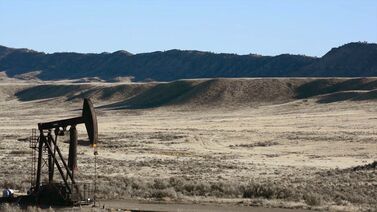
The Department of the Interior today announced a final rule from the Bureau of Land Management (BLM) that will curb the waste of natural gas during the production of oil and gas on federal and Tribal lands. This final rule modernizes regulations that are more than 40 years old and will hold oil and gas companies accountable by requiring measures to avoid wasteful practices and find and fix leaks, while ensuring that American taxpayers and Tribal mineral owners are fairly compensated through royalty payments.
By building on technological advances and best management practices to help reduce waste, the rule is expected to generate more than $50 million in additional natural gas royalty payments each year to the federal taxpayer and Tribal mineral owners, while conserving billions of cubic feet of gas that might otherwise have been vented, flared, or leaked from oil and gas operations. This conserved gas will be available to power American homes and industries.
“This final rule, which updates 40-year-old regulations, furthers the Biden-Harris administration’s goals to prevent waste, protect our environment, and ensure a fair return to American taxpayers,” said Secretary Deb Haaland. “By leveraging modern technology and best practices to reduce natural gas waste, we are taking long-overdue steps that will increase accountability for oil and gas operators and benefit energy communities now and for generations to come.”
“This rule represents a common sense, fair, and equitable solution to preventing waste that provides a level playing field for all of our energy-producing communities,” said Bureau of Land Management Director Tracy Stone-Manning. “The BLM worked extensively with a wide range of stakeholders to modernize our decades-old regulations and help protect communities across the country.”
Since the 1980s, as the pace of oil and gas development on public lands has rapidly expanded, the percentage of natural gas lost to venting (the intentional release of natural gas) and flaring (the burning of vented natural gas) has more than doubled. Between 2010 and 2020, the total venting and flaring reported by federal and Indian onshore lessees averaged approximately 44.2 billion cubic feet per year, enough to serve more than 675,000 homes.
The final rule responds to a series of U.S. Government Accountability Office reports highlighting revenue lost due to the BLM’s outdated regulations. Several states, including Colorado, New Mexico, Pennsylvania and Wyoming, as well as the U.S. Environmental Protection Agency, (EPA), have taken steps to limit venting, flaring and/or leaks from oil and gas operations either for purposes of preventing waste, as is BLM, or improving air quality. The BLM rule is separate and distinct from the EPA rule and ensures that operators can comply with applicable state, Tribal or federal rules while meeting these commonsense requirements.
The rule modernizes the BLM’s existing regulations to require current technology and practices to better account for the waste of natural gas. It requires operators of federal and Indian oil and gas leases to take reasonable steps to avoid natural gas waste from the very beginning of operations, carry out leak detection and repair across ongoing operations, and cut down on wasteful gas venting and flaring. Consistent with the Inflation Reduction Act, the rule also sets new limits on “royalty-free” flaring, so that public and Tribal mineral owners are properly compensated through royalty payments for avoidable losses of natural gas.
The BLM received thousands of comments during an expansive public comment period before finalizing the rule, including from landowners, environmental groups, oil and gas producers, industry experts, academia and other stakeholders. The comments helped inform changes to the proposed rule. More information about the final rule is available here.
The Mineral Leasing Act obligates the Secretary of the Interior to use all reasonable precautions to prevent waste of oil and gas and further requires oil and gas lessees to observe rules for the prevention of avoidable waste of natural gas. Today’s final rule is intended to better implement those obligations. The final rule will be published in the Federal Register in the coming days.


